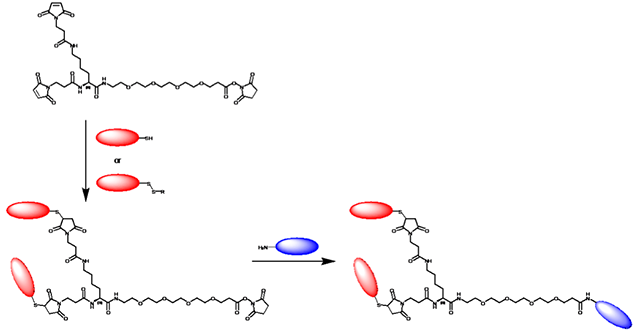Welcome to Iris Biotech
For better service please confirm your country and language we detected.

For better service please confirm your country and language we detected.

Thank you very much for your interest in our products. All prices listed on our website are ex-works, Germany, and may attract customs duties when imported.
You may/will be contacted by the shipping company for additional documentation that may be required by the US Customs for clearance.
We offer you the convenience of buying through a local partner, Peptide Solutions LLC who can import the shipment as well as prepay the customs duties and brokerage on your behalf and provide the convenience of a domestic sale.
Continue to Iris Biotech GmbHSend request to US distributorPublished on 07.03.2014
 Bis Thiol & Amine reactive PEGylated Cross-Linker which has been used for enhanced receptor binding, for the design of long-acting conjugates for type 2 diabetes therapeutics and in reorienting the Fab Domains of Trastuzumab Results in Potent HER2 Activators.
Bis Thiol & Amine reactive PEGylated Cross-Linker which has been used for enhanced receptor binding, for the design of long-acting conjugates for type 2 diabetes therapeutics and in reorienting the Fab Domains of Trastuzumab Results in Potent HER2 Activators.
This linker can bind two units of thiol carrying molecules, like proteins with solvent accessible cysteins and can in a consecutive step conjugate to amine carrying compounds via standard amid bond formation reaction or in a simple one-step reaction using NHS active ester.
In case the thiol reactive compound shows any receptor interaction the affinity is significantly increased. The amine reactive compound can be an mPEG, simply to increase solubility of the conjugate or other compounds with biological activity. This second conjugation partner can also carrying a PEG spacer with terminal amino group and through this combination a vast variety of PEGylated sophisticated conjugates can very easily be designed. Through this multifunctional property this linker is an ideal key building block for the design of conjugates typically used in combination therapy.
References